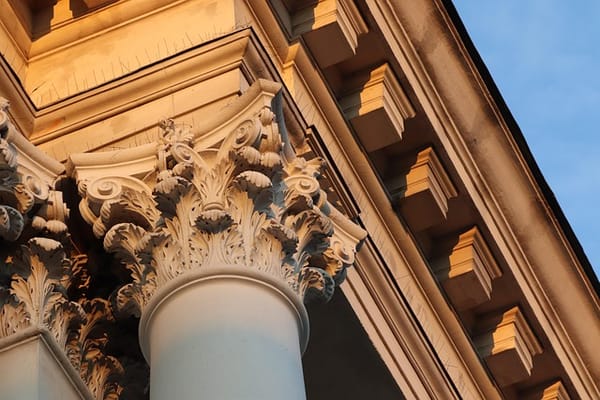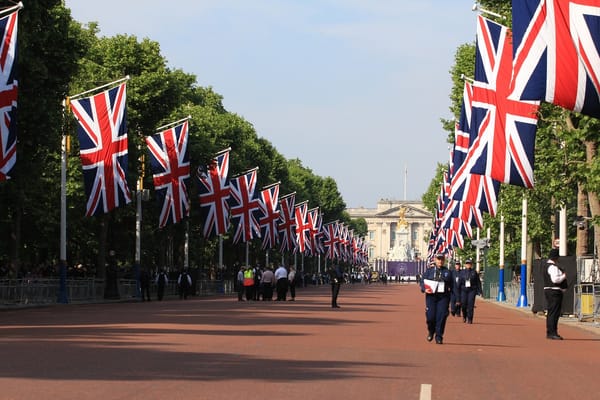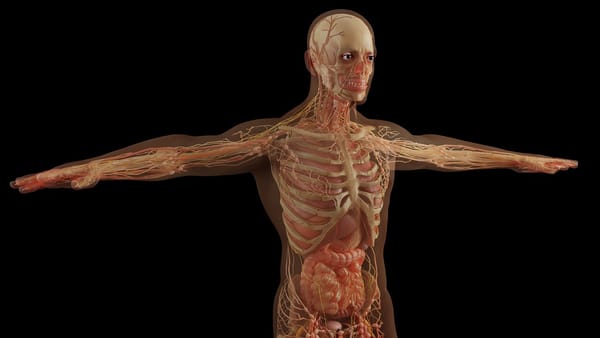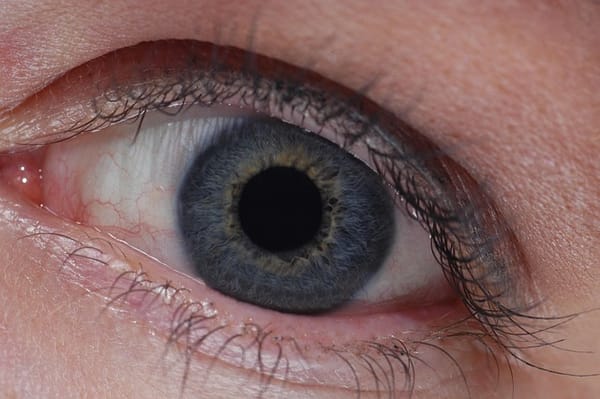When the Light Turns Inward
Just as the soil needs to lie fallow, our senses require periods of rest. Autumn and winter are not mere absences of light; they are the earth’s deep inhalations.
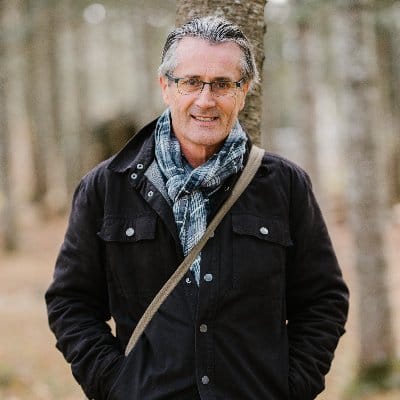
Just as the soil needs to lie fallow, our senses require periods of rest. Autumn and winter are not mere absences of light; they are the earth’s deep inhalations.


October is the month when light softens and the air begins to speak differently. The scents change, the sounds become sharper; even the sky seems to listen.
In the Northern Hemisphere, nature draws her forces inward. What was expansive and radiant through summer now begins to contract and deepen, preparing for the inner work of winter.
We, too, are invited to turn inward. The same rhythm that moves through trees and animals moves also through the human being. It asks us to gather what the year has revealed, to find meaning in our experiences — not only as random events, but as part of a living pattern.
The challenges of the world — political, social, personal — may appear chaotic, yet they too belong to a larger movement. Humanity, through all its turmoil, is learning how to awaken to its deeper purpose. Evolution is not a chain of accidents; it is a school of consciousness. Each difficulty, like each season, has its place within a grander unfolding.
As the outer world quiets, autumn offers a rare silence in which these questions can breathe:
What is the meaning behind what I meet?
What part of me is ripening for change?
The turning of the year is a teacher. It does not speak in theories, but through the senses — through light, cold, scent, and silence.
In summer, the world overflows into us. Light, sound, colour, and movement stream through the open windows of our being. The senses are extroverted organs — they belong to the world as much as to ourselves.
Yet they tire.
Just as the soil needs to lie fallow, our senses require periods of rest. Autumn and winter are not mere absences of light; they are the earth’s deep inhalations. In this quieter half of the year, what was scattered in brightness begins to recollect itself inwardly.
In the human being, this same rhythm echoes daily. Each night, as the body sinks into sleep, the sense-world withdraws. What was taken in by the eyes, ears, and skin during the day is digested in the depth of the organism. The metabolic life — the silent builder — begins its restoration.
When this rhythm is disturbed, when sense activity continues without pause — as it increasingly does through screens and artificial light — the body loses its natural alternation between absorption and renewal. The human being becomes stretched between waking over-stimulation and restless sleep.
Stillness is not a luxury; it is part of the architecture of life. Winter teaches us this: that life retreats in order to gather strength. The trees, the animals, and the human soul all draw near to their invisible roots. The senses, when given darkness and silence, begin to open from within.
Inwardness is the secret face of perception. Without it, we see only surfaces. With it, the world becomes transparent to spirit.
Every spring, the world begins again in tenderness.
Soft green shoots push through cold soil, and the trees clothe themselves once more in new skin. These first leaves and buds are easily bruised; they cannot bear strong winds or careless hands. Nature guards them with moderation — no harsh sunlight, no sudden cold. Everything proceeds in measured gentleness so that what is forming may take its right shape.
The child, too, lives in this springtime of existence. Their senses are still young, still porous. They are open like petals to the world — drinking in colour, sound, gesture, and warmth. Everything around them works inwardly, helping form the architecture of perception and the texture of soul.
To live with children is to live near creation itself. Yet it also asks of us great care. For just as saplings can be warped by strong winds, a young soul can be overstimulated before its foundations are ready. The modern world surrounds children with too many impressions: fast-moving images, constant sound, unending light. These act like an artificial summer that never darkens, never sleeps. What should grow from within is prematurely fixed by the outer glare.
There is a difference between a child seeing and a child being shown.
To see is an act of participation: the senses reach out, the soul moves toward the world, and the world meets that movement.
To be shown, especially through screens, is a passive experience — the image already formed, the rhythm already decided, the light unceasing. The senses are not called into activity; they are merely flooded.
This is why boredom has become so widespread. After so much pre-digested stimulation, reality can seem too slow, too plain. Yet boredom is not an enemy; it is a threshold. It is the quiet before true perception awakens. When we allow the senses to rest — when we give space for rhythm, darkness, silence — the child begins again to see for themselves.
To protect this tenderness is not to shield children from the world, but to offer them a world that can breathe. One where the senses may unfold as nature intended — through touch, through rhythm, through encounter — not through the glare of endless representation.
There is a quiet dignity in seeing for oneself.
When we truly see, we do not consume the world; we meet it. The gaze extends outward like a hand, and the world answers by offering its surfaces, its depths, its unspoken meanings. In this exchange something awakens in both: the object becomes more real, and so do we.
But modern life surrounds us with images that have already made the journey for us. They arrive saturated, complete, pre-digested. The screen presents not the world but a world-effect — light arranged to mimic the living. We are no longer asked to cross the distance, to form the image within. The act of seeing is replaced by the act of receiving.
At first, this abundance of representation feels empowering. Everything seems available. Yet slowly, the senses forget their own strength. The eyes grow passive, the ear impatient, the touch uncertain. We scroll rather than behold; we register rather than encounter. The very organs that connect us to creation lose their appetite for the real.
To see is an effort of love. It asks patience, rhythm, and vulnerability. It asks that we let the world reveal itself in its own time. Screen perception, by contrast, collapses time; it gives everything at once. There is no threshold to cross, no silence to dwell in. The soul becomes filled, yet not nourished — like a body that eats without digesting.
The healing of perception begins when we remember this distance — the sacred interval between ourselves and what we behold. Whether watching a sunset, listening to a friend, or reading a line of poetry, we can allow a moment of stillness before rushing to meaning. In that pause, the world begins to speak again.
To re-learn seeing is not a regression to the past but a preparation for the future. For as technology advances, it will become ever easier to live within reflections of life rather than life itself. Our task is to kindle within the human being a sense that can penetrate appearances — a living seeing that transforms image back into encounter.
Then even the screen may one day become transparent, not to distraction but to spirit; not to noise, but to the quiet presence that waits behind all things.
When winter comes, the world seems to fall silent. The leaves are gone, the air thins, and the colours fade into a long exhale of gray and white. Yet beneath that stillness, the earth is alive with secret activity. Roots thicken, seeds rest, and the forces of renewal gather unseen. What appears lifeless is, in truth, a preparation for rebirth.
So it is with the human soul. When the outer senses rest — when we are no longer flooded by impressions — something inward awakens. The quiet of winter mirrors the quiet we need to hear the subtle stirrings of spirit. The soul, too, has its seasons: it expands in summer’s outwardness and contracts in winter’s inward work. Without this rhythm, the inner world withers.
Sleep is the nightly echo of this cosmic winter. Each night the human being dies a little to the outer world so that life may be restored from within. Every morning, we are reborn with the freshness of dawn. In this way the body and the soul participate in the same mystery that governs the turning of the year: death as rest, rest as renewal.
In the deep midwinter of the human story stands an image: a child in a stable, wrapped in straw, surrounded by silence and devotion. The outer world is bare, yet within that barrenness a light is born. Shepherds and kings alike turn toward it — the simple and the wise, the earthly and the celestial. The scene reminds us that all true beginnings occur in stillness.
When the senses fall silent, the spirit speaks.
When the outer world withdraws, the inner sun begins to rise.
May this winter be not a closing but a threshold — a season to honour the senses through rest, to rediscover the sacred rhythm between seeing and being, between activity and repose. For in learning to dwell again within these rhythms, humanity rediscovers its place within the living evolution of the world — not as accident, but as meaning in becoming.
